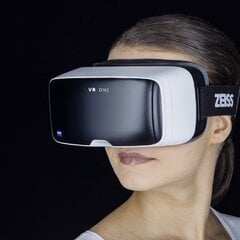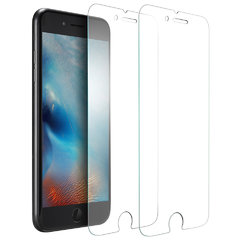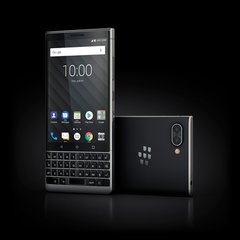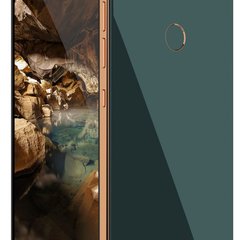Types of mobile phone displays

In today's mobile market, there are many types of displays that are installed in devices and users of the phone are at least confused by the number of types not knowing what phone model to choose and what kind of display is the "right" for them. This is due to the dynamic development of technology that is almost impossible to follow and we decided to address this issue in the hope that this text will create a little clearer picture of our readers about the types of displays as well as advantages and disadvantages of certain types.
First of all, the display is defined as a device for visual presentation of information in visual form. Some of fundamental division of the display would be monochromatic (single color) and color (multi color).
Color Displays or its common types are themostin use today and depending on the technology for production of color displays, there are many types of them such as CSTN, TFT, TFD or OLED.
There are also two types of displays that are sensitive to touch and they are Capacitive and Resistive, both types are based on TFT technology.
Capacitive - This type of display functions on the principle of recognition and "feelings" of electric signals that our body gives,
Resistive displays operate on the principle of recognition and "feeling" the pressure on them by the user. This type of display works not only to touch of human skin, but react to the stylus (pen), which mainly comes with a device that is equipped for such a display.
LCD (Liquid Crystal Display)
LCD displays made of liquid crystals and are most widespread. Their quality varies in a huge range, ones that are slightly better than those used on the calculator, to the premium models such as the Samsung Galaxy 5.0 Wi-Fi or HTC flyer 3G. All LCD displays must have light that illuminates the pixels, which increases the thickness of the display, and although these displays can have extremely high resolution, their mallfunction is high consumption of energy. LCD displays can be divided into two main groups of STN and TFT displays.
S-LCD (Super Liquid Crystal Display)
S-type LCD display is made of liquid crystals, based on the same technology as the LCD displays and the advantage over them is they use less energy. Models equipped with this type of display such as the Samsung Nexus Google, or HTC Trophy are highly popular because of battery efficency.
TFT (Thin Film Transistor)
TFT displays are the most widespread displays of mobile technology in the world today, and also one of the best displays made of liquid crystals in terms of image quality and time of respond.TFT display are like TFD display that using Active-Matrix technology, which means that for each pixel is setreceiver that allows separate switching on and off individually for each pixel that ultimately results in fast response and high quality ofimagecontrast. Flaw are weaker viewing angle, which amounts to slight changes in color on display. This type of display is used by almost all mobile phone manufacturersand some of models that are equipped with this type of display are Apple iPhone 4S or BlackBerry 9930.
OLED (Organic Light-Emitting Diode)
OLED technology is based on the small dots of organic polymers embedded in a display that emits light when they contact withelectric energy. OLED displays have numerous advantages over LCD displays. They are thinner, lighter, brighter, have better viewing angles, contrast and response time tovideo and animation as well as lower consumption of energy. Also, this type of display is cheaper and easier to produce. On the other hand, LCD displays are better for reading than the OLED when using the stronger sunlight.
AMOLED (Active-Matrix Organic Light-Emitting Diode)
AMOLED technology is almost a younger brother of OLED display technology that is relatively new in the world mobile technology. Technology behind this display is the same as in OLED, but performance are better, mostly in terms of significantly lower power consumption what is very convenient and important when it comes to portable devices such as mobile phones, where battery life is crucial. Angles of visibility in this type of display are good and the advantage is that this type of display type thin. This display is mainly used for qualitative modelsmore classes like Nokia N9 or HTC's Desire.
As we stated at the beginning of this little school, speed at which displaystechnologiesare developing and that are used in all aspects of today life is enormous, and commercialization of technologies such as 3D display for mobile devices are emerging. This type of display will be a great satisfaction in addition to dedicated gamers, but also 3D images when positioning satellite (GPS) to represent the terrain or a building with this technology.
Another interesting direction of development of the display presented by Samsung and Nokia display. This flexible technology might one day lead to a "roll" yourtabletin a smartphone when you depart from home, or to "roll" your smartphone and attach it to your arm and use as a clock.
Kategorijas
Futuristic Future Review Market Compare models Coming Soon General New Technologies News Actual Alcatel Tips Huawei Gorilla glass Comparation Smartwatch Apps Software Apple Blackberry HTC Motorola Nokia Sony LG Samsung Android Sony Ericsson Interesting Little school Inovations Microsoft Symbian iOS Acer Google Games Popular
Populāras ziņas
Tagi
New model Android Samsung nokia apple iPhone review Inovations HTC Blackberry iOS Google LG motorola Operative system research sony Galaxy update market share Samsung Galaxy S8 galaxy s5 Ice Cream Sandwich LG G3 price Sony Ericsson AMOLED LG G3 Future vision Gingerbread definition Tablet camera Huawei game iPhone 5S LG G3 screen
Meklēt
Meklējiet un skatiet jaunākās emuāra ziņas.










